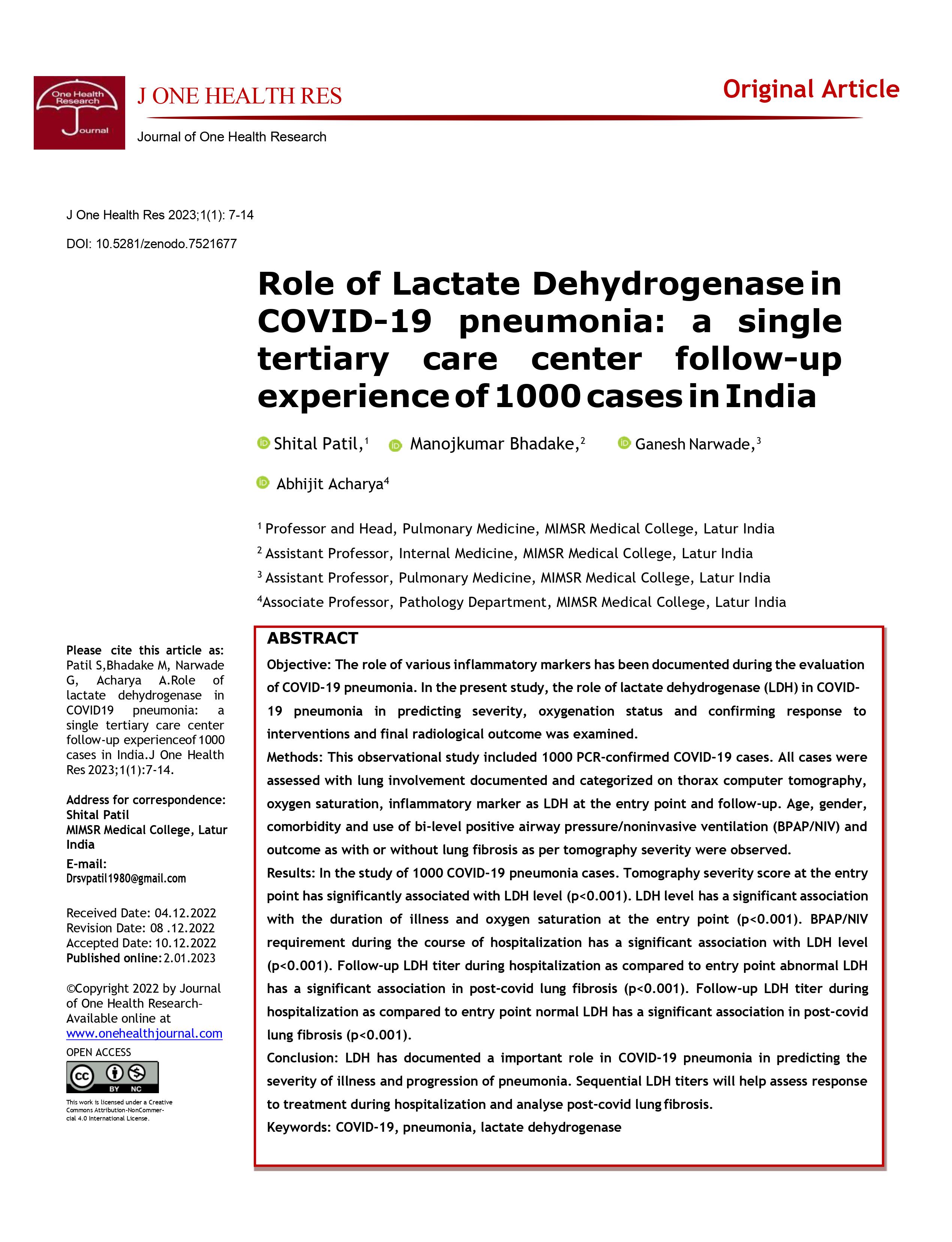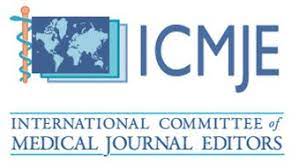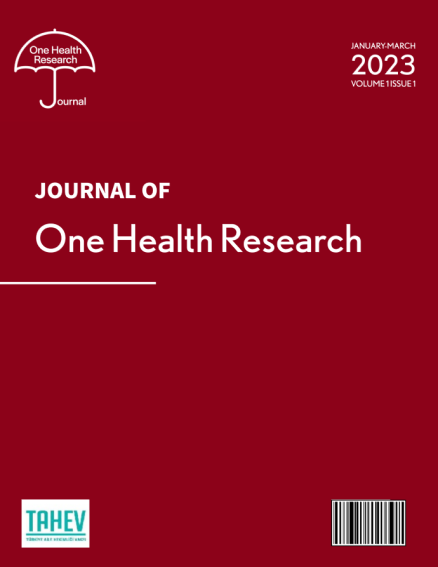Patil, S. Role of Lactate Dehydrogenasein COVID-19 pneumonia: a single tertiary care center follow-up experienceof1000casesinIndia
Role oflactate dehydrogenase in covid-19pneumonia
DOI:
https://doi.org/10.5281/zenodo.7521677Anahtar Kelimeler:
COVID-19 pneumonia, LDH, Oxygen saturation, Inflammatory markerÖzet
Objective: The role of various inflammatory markers has been documented during the evaluation of COVID-19 pneumonia. In the present study, the role of lactate dehydrogenase (LDH) in COVID19 pneumonia in predicting severity, oxygenation status and confirming response to interventions and final radiological outcome was examined.
Methods: This observational study included 1000 PCR-confirmed COVID-19 cases. All cases were assessed with lung involvement documented and categorized on thorax computer tomography, oxygen saturation, inflammatory marker as LDH at the entry point and follow-up. Age, gender, comorbidity and use of bi-level positive airway pressure/noninvasive ventilation (BPAP/NIV) and outcome as with or without lung fibrosis as per tomography severity were observed.
Results: In the study of 1000 COVID-19 pneumonia cases. Tomography severity score at the entry point has significantly associated with LDH level (p<0.001). LDH level has a significant association with the duration of illness and oxygen saturation at the entry point (p<0.001). BPAP/NIV requirement during the course of hospitalization has a significant association with LDH level (p<0.001). Follow-up LDH titer during hospitalization as compared to entry point abnormal LDH has a significant association in post-covid lung fibrosis (p<0.001). Follow-up LDH titer during hospitalization as compared to entry point normal LDH has a significant association in post-covid
lung fibrosis (p<0.001).
Conclusion: LDH has documented a important role in COVID-19 pneumonia in predicting the severity of illness and progression of pneumonia. Sequential LDH titers will help assess response to treatment during hospitalization and analyse post-covid lung fibrosis.
Referanslar
References:
https://www.who.int/emergencies/diseases/novel-coronavirus-2019/situation-reports [accessed on 24 December 2021]
G. Lippi, M. Plebani, The critical role of laboratory medicine during coronavirus disease 2019 (COVID-19) and other viral outbreaks, Clin. Chem. Lab. Med. 58 (2020) 1063–1069, https://doi.org/10.1515/cclm-2020-0240
M.K. Bohn, G. Lippi, A. Horvath, S. Sethi, D. Koch, M. Ferrari, C.-B. Wang, N. Mancini, S. Steele, K. Adeli, Molecular, serological, and biochemical diagnosis and monitoring of COVID-19: IFCC taskforce evaluation of the latest evidence, Clin. Chem. Lab. Med. 58 (2020) 1037–1052.
M. Cecconi, D. Piovani, E. Brunetta, A. Aghemo, M. Greco, M. Ciccarelli, C. Angelini, A. Voza, P. Omodei, E. Vespa, N. Pugliese, T.L. Parigi, M. Folci, S. Danese, S. Bonovas, Early predictors of clinical deterioration in a cohort of 239 patients hospitalized for COVID-19 infection in lombardy, Italy, J. Clin. Med. 9 (2020), https://doi.org/10.3390/jcm9051548
D. Ferrari, A. Motta, M. Strollo, G. Banfi, M. Locatelli, Routine blood tests as a potential diagnostic tool for COVID-19, Clin. Chem. Lab. Med. 58 (2020) 1095–1099.
Y. Han, H. Zhang, S. Mu, W. Wei, C. Jin, Y. Xue, C. Tong, Y. Zha, Z. Song, G. Gu, Lactate dehydrogenase, a risk factor of severe COVID-19 patients, MedRxiv (2020), https://doi.org/10.1101/2020.03.24.20040162.
B.M. Henry, G. Aggarwal, J. Wong, S. Benoit, J. Vikse, M. Plebani, G. Lippi, Lactate dehydrogenase levels predict coronavirus disease 2019 (COVID-19) severity and mortality: a pooled analysis, Am. J. Emerg. Med. (2020), https://doi.org/10.1016/j.ajem.2020.05.073
B.M. Henry, M.H.S. de Oliveira, S. Benoit, M. Plebani, G. Lippi, Hematologic, biochemical and immune biomarker abnormalities associated with severe illness and mortality in coronavirus disease 2019 (COVID-19): a meta-analysis, Clin. Chem. Lab. Med. 58 (2020) 1021–1028
G. Lippi, M. Plebani, Laboratory abnormalities in patients with COVID-2019 infection, Clin. Chem. Lab. Med. 58 (2020) 1131–1134, https://doi.org/10.1515/ cclm-2020-0198
Z.-L. Zhang, Y.-L. Hou, D.-T. Li, F.-Z. Li, Laboratory findings of COVID-19: a systematic review and meta-analysis, Scand. J. Clin. Lab. Invest. (2020) 1–7.
Huijgen HJ, Sanders GT, Koster RW, Vreeken J, Bossuyt PM. The clinical value of lactate dehydrogenase in serum: a quantitative review. Eur J Clin Chem Clin Biochem 1997; 35:569–75.
Stankovic Stojanovic K, Lionnet F. Lactate dehydrogenase in sickle cell disease. Clin Chim Acta 2016; 458:99–102.
Goldberg DM, Brown D. Biochemical tests in the diagnosis, classification, and management of patients with malignant lymphoma and leukemia. Clin Chim Acta 1987; 169:1–76.
V. Jurisic, S. Radenkovic, G. Konjevic, The actual role of LDH as tumor marker, biochemical and clinical aspects, Adv. Exp. Med. Biol. 867 (2015) 115–124.
A Erez, O. Shental, J.Z. Tchebiner, M. Laufer-Perl, A. Wasserman, T. Sella, H. Guzner-Gur, Diagnostic and prognostic value of very high serum lactate dehydrogenase in admitted medical patients, Isr. Med. Assoc. J. 16 (2014) 439–443.
W. Guan, Z. Ni, Y. Hu, W. Liang, C. Ou, J. He, L. Liu, H. Shan, C. Lei, D.S.C. Hui, B. Du, L. Li, G. Zeng, K.-Y. Yuen, R. Chen, C. Tang, T. Clinical characteristics of coronavirus disease 2019 in China, N. Engl. J. Med. 382 (2020) 1708–1720, https://doi.org/10.1056/NEJMoa2002032.
Kermali M, Khalsa RK, Pillai K, Ismail Z, Harky A. The role of biomarkers in diagnosis of COVID-19 - A systematic review. Life Sci. 2020 Aug 1; 254:117788. doi: 10.1016/j.lfs.2020.117788.
Shi J, Li Y, Zhou X, Zhang Q, Ye X, Wu Z, et al. Lactate dehydrogenase and susceptibility to deterioration of mild COVID19 patients: a multicenter nested case-control study. BMC Med 2020; 18:168.
Zhang JJY, Lee KS, Ang LW, Leo YS, Young BE. Risk Factors for Severe Disease and Efficacy of Treatment in Patients Infected With COVID-19: A Systematic Review, Meta-Analysis, and Meta-Regression Analysis. Clin Infect Dis. 2020 Nov 19;71(16):2199-2206.
Aloisio E, Chibireva M, Serafini L, Pasqualetti S, Falvella FS, Dolci A, et al. A comprehensive appraisal of laboratory biochemistry tests as major predictors of COVID-19 severity. Arch Pathol Lab Med. 2020; 144:1457–1464.
Magdy, A.M., Saad, M.A., El Khateeb, A.F. et al. Comparative evaluation of semi-quantitative CT-severity scoring versus serum lactate dehydrogenase as prognostic biomarkers for disease severity and clinical outcome of COVID-19 patients. Egypt J Radiol Nucl Med 52, 114 (2021). https://doi.org/10.1186/s43055-021-00493-2
Huang C, Wang Y, Li X, Ren L, Zhao J, Hu Y, Zhang L, Fan G, Xu J, Gu X, Cheng Z, Yu T, Xia J, Wei Y, Wu W, Xie X, Yin W, Li H, Liu M, Xiao Y, Gao H, Guo L, Xie J, Wang G, Jiang R, Gao Z, Jin Q, Wang J, Cao B (2020) Clinical features of patients infected with 2019 novel coronavirus in Wuhan, China. Lancet 395(10223):497–506.
Salvador Payán-Pernía MD, Lucía Gómez Pérez MD, Remacha Sevilla ÁF et al (2021) Absolute Lymphocytes, Ferritin, C-Reactive Protein, and Lactate Dehydrogenase Predict Early Invasive Ventilation in Patients With COVID-19. Lab Med 52(2):141–145.
Tao RJ, Luo XL, Xu W et al (2018) Viral infection in community acquired pneumonia patients with fever: a prospective observational study. J Thorac Dis 10(7):4387–4395
Lv XT, Zhu YP, Cheng AG et al (2020) High serum lactate dehydrogenase and dyspnea: positive predictors of adverse outcome in critical COVID-19 patients in Yichang. World J Clin Cases 8(22):5535–5546.
Tordjman M, Mekki A, Mali RD, et al. Determining extent of COVID-19 pneumonia on CT based on biological variables. Respir Med. 2020; 175:106206. doi: 10.1016/j.rmed.2020.106206
Boldt M.J., Bai T.R. Utility of lactate dehydrogenase vs radiographic severity in the differential diagnosis of Pneumocystis carinii pneumonia. Chest. 1997; 111:1187–1192. doi: 10.1378/chest.111.5.1187.
Deng X., Liu B., Li J., Zhang J., Zhao Y., Xu K. Blood biochemical characteristics of patients with coronavirus disease 2019 (COVID-19): a systemic review and meta-analysis. Clin. Chem. Lab. Med. 2020;1 doi: 10.1515/cclm-2020-0338.
Wu, My., Yao, L., Wang, Y. et al. Clinical evaluation of potential usefulness of serum lactate dehydrogenase (LDH) in 2019 novel coronavirus (COVID-19) pneumonia. Respir Res 21, 171 (2020). https://doi.org/10.1186/s12931-020-01427-8
Chen N, Zhou M, Dong X, Qu J, Gong F, Han Y, et al. Epidemiological and clinical characteristics of 99 cases of 2019 novel coronavirus pneumonia in Wuhan, China: a descriptive study. Lancet. 2020;395(10223):507–13.
Li G, Fan Y, Lai Y, et al. Coronavirus infections and immune responses. J Med Virol. 2020;92(4):424–32.
Xu Z, Shi L, Wang Y, et al. Pathological findings of COVID-19 associated with acute respiratory distress syndrome. Lancet Respir Med. 2020; 8:420-422.
Xi X, Xu Y, Jiang L, Li A, Duan J, Du B; Chinese Critical Care Clinical Trial Group. Hospitalized adult patients with 2009 influenza A(H1N1) in Beijing, China: risk factors for hospital mortality. BMC Infect Dis. 2010; 10:256.
Cho WH, Kim YS, Jeon DS, et al. Outcome of pandemic H1N1 pneumonia: clinical and radiological findings for severity assessment. Korean J Intern Med. 2011; 26:160-167.
Liu CL, Lu YT, Peng MJ, Chen PJ, Lin RL, Wu CL, Kuo HT. Clinical and laboratory features of severe acute respiratory syndrome vis-a-vis onset of fever. Chest. 2004 Aug;126(2):509-17. doi: 10.1378/chest.126.2.509. PMID: 15302738; PMCID: PMC7094461.
D. Wang, B. Hu, C. Hu, F. Zhu, X. Liu, J. Zhang, et al. Clinical characteristics of 138 hospitalized patients with 2019 novel coronavirus-infected pneumonia in Wuhan, China
JAMA, 323 (11) (2020), pp. 1061-1069
Poggiali E, Zaino D, Immovilli P, Rovero L, Losi G, Dacrema A, Nuccetelli M, Vadacca GB, Guidetti D, Vercelli A, Magnacavallo A, Bernardini S, Terracciano C. Lactate dehydrogenase and C-reactive protein as predictors of respiratory failure in COVID-19 patients. Clin Chim Acta. 2020 Oct; 509:135-138.
Han Y, Zhang H, Mu S, Wei W, Jin C, Tong C, Song Z, Zha Y, Xue Y, Gu G. Lactate dehydrogenase, an independent risk factor of severe COVID-19 patients: a retrospective and observational study. Aging (Albany NY). 2020 Jun 24;12(12):11245-11258.
Huang H, Cai S, Li Y, Li Y, Fan Y, Li L, Lei C, Tang X, Hu F, Li F and Deng X (2020) Prognostic Factors for COVID-19 Pneumonia Progression to Severe Symptoms Based on Earlier Clinical Features: A Retrospective Analysis. Front. Med. 7:557453. doi: 10.3389/fmed.2020.557453
Fang X, Mei Q, Yang T, Li L, Wang Y, Tong F, et al. Low-dose corticosteroid therapy does not delay viral clearance in patients with COVID-19. J Infect. (2020) 81:147–78.
Li X, Xu S, Yu M, Wang K, Tao Y, Zhou Y, et al. Risk factors for severity and mortality in adult COVID-19 inpatients in Wuhan. J Allergy Clin Immunol. (2020) 146:110–8.
Duan YN, Qin J. Pre- and posttreatment chest CT findings: 2019 novel coronavirus (2019-nCoV) pneumonia. Radiology. (2020) 295:21. doi: 10.1148/radiol.2020200323
Huang Y, Guo L, Chen J, Wu M, Zhang C, Liu Z, Li J, Li K, Xiong Z, Wu Q, Li Z, Luo K, Yuan W and Wu X (2022) Serum Lactate Dehydrogenase Level as a Prognostic Factor for COVID-19: A Retrospective Study Based on a Large Sample Size. Front. Med. 8:671667. doi: 10.3389/fmed.2021.671667
Gao, Y-D, Ding, M, Dong, X, et al. Risk factors for severe and critically ill COVID-19 patients: A review. Allergy. 2021; 76: 428– 455. https://doi.org/10.1111/all.14657
Yan L, Zhang H-T, Goncalves J, Xiao Y, Wang M, Guo Y, Sun C, Tang X, Jing L, Zhang M, et al: An interpretable mortality prediction model for COVID-19 patients. Nat Mach Intell. 2:283–288. 2020.
Wu C, Chen X, Cai Y, Xia J, Zhou X, Xu S, Huang H, Zhang L, Zhou X, Du C, Zhang Y, Song J, Wang S, Chao Y, Yang Z, Xu J, Zhou X, Chen D, Xiong W, Xu L, Zhou F, Jiang J, Bai C, Zheng J, Song Y. Risk factors associated with acute respiratory distress syndrome and death in patients with coronavirus disease 2019 pneumonia in Wuhan, China. JAMA Intern Med 2020; 180:934–943
Goyal P, Choi JJ, Pinheiro LC, Schenck EJ, Chen R, Jabri A, Satlin MJ, Campion TR Jr, Nahid M, Ringel JB, Hoffman KL, Alshak MN, Li HA, Wehmeyer GT, Rajan M, Reshetnyak E, Hupert N, Horn EM, Martinez FJ, Gulick RM and Safford MM Clinical characteristics of COVID-19 in New York City. N Engl J Med 2020;382: 2372–2374.
Booth CM, Matukas LM, Tomlinson GA, et al. Clinical features and short-term outcomes of 144 patients with SARS in the greater Toronto area. JAMA 2003; 289: 2801–2809
Li W, Lin F, Dai M, Chen L, Han D, Cui Y, Pan P. Early predictors for mechanical ventilation in COVID-19 patients. Ther Adv Respir Dis. 2020 Jan-Dec; 14:1753466620963017. doi: 10.1177/1753466620963017. PMID: 33054630
Garcia-Gordillo JA, Camiro-Zúñiga A, Aguilar-Soto M, Cuenca D, Cadena-Fernández A, et al. (2021) COVID-IRS: A novel predictive score for risk of invasive mechanical ventilation in patients with COVID-19. PLOS ONE 16(4): e0248357. https://doi.org/10.1371/journal.pone.0248357

İndir
Yayınlanmış
Nasıl Atıf Yapılır
Sayı
Bölüm
Lisans
Telif Hakkı (c) 2023 Journal of One Health Research

Bu çalışma Creative Commons Attribution 4.0 International License ile lisanslanmıştır.




